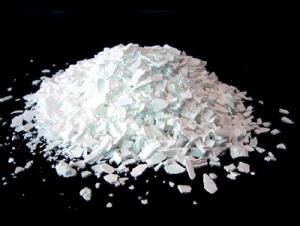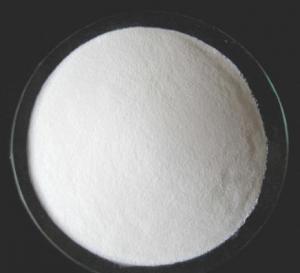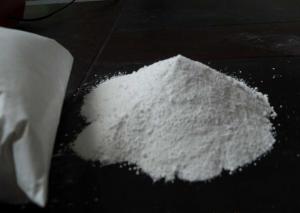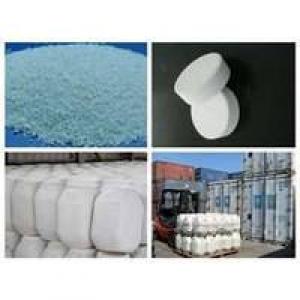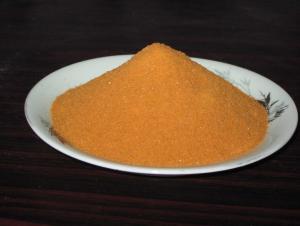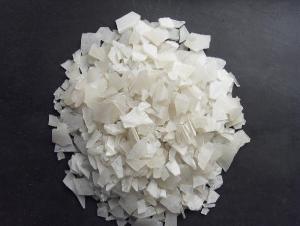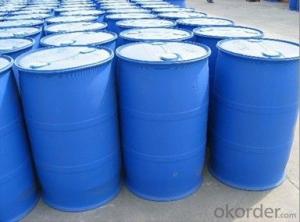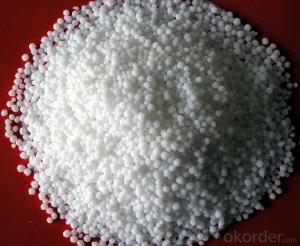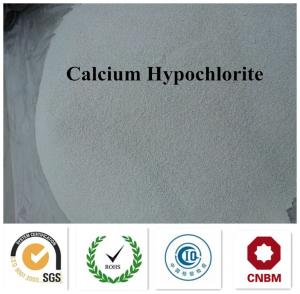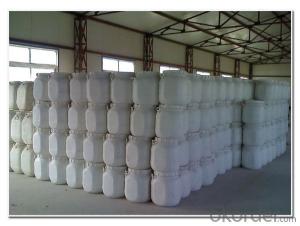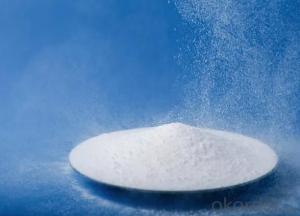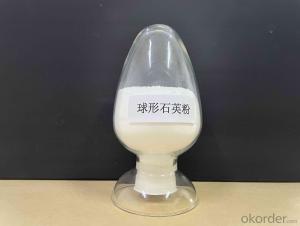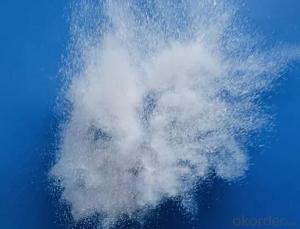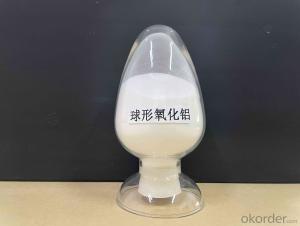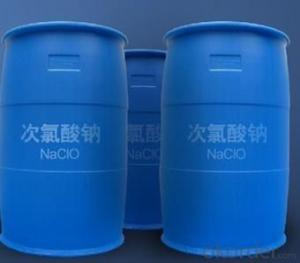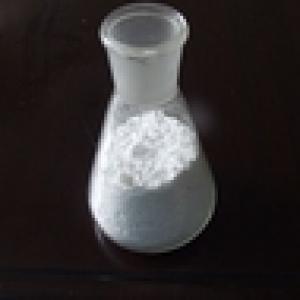Calcium Chloride Best Quality With Low Price
- Loading Port:
- Tianjin
- Payment Terms:
- TT OR LC
- Min Order Qty:
- -
- Supply Capability:
- 6000 m.t./month
OKorder Service Pledge
OKorder Financial Service
You Might Also Like
Calcium Chloride 74 % Flake
Most favorable price
Excellent and all round service
Strong and stable supply ability
I - General
1) Calcium Chloride :74%Min
2) White flakes
4) Direct manufacturer
5) CAS:10035-04-8
II - Tech Standard: HG/T 2327-2004
III - Application:
1) - Snow melting and de-icing in winter
2) - Dust controlling in road mantenance
3) - Anti-icing and accelerator for concrete
4) - De-inking in paper manufacturing
IV - Packaging: 25kg/bag in a PP woven bag with PE inner liner.or 1000kg/bag(Jumbo bag)
V - Delivery time: 20 days
VI - Production Capacity: 50mt per day
VII - advantage:
1) Most advanced equipment,
2) Good quality(white,not yellowing and little impurity),
3) Most competitive price,
4) Excellent and all-round service
- Q:A. oxygen demanding wastesB. organic plant nutrientsC. inorganic plant nutrientsD. water soluble inorganic chemicalsE. sediment
- Acids, D. water soluble inorganic chemicals salts, D. water soluble inorganic chemicals metals E. sediment
- Q:The lack of symptoms and food sources of several inorganic salts
- Food sources of inorganic salts containing calcium Source: dairy products, beans, cereals, kelp and so on. Source: seafood, etc. Food of iron-containing inorganic salts Source: Fruits Containing iodine-containing inorganic salts Source (trace): seaweed, jellyfish, corn, mussels, etc. Zinc-containing inorganic salt food sources (trace): animal liver (viscera), fruit, peanuts, etc.
- Q:Advertisements related to inorganic salts -.-,
- This is a good new, with a new cover in the cover of high calcium, a top of the past five, high pressure film, fruit flavor, a piece of bang on the fifth floor, not the same time, Feast children! One day one, the effect is good, but also affordable!
- Q:as a example potesium,sodium,magnees,calcium
- I'd okorder /
- Q:How to get an inorganic salt
- Inorganic salts are salts of inorganic compounds, formerly known as minerals. Plant growth needs N, P, K three elements and Ca, Zn, B, Mg, S, Fe and other trace elements. Depending on the type and amount of inorganic salts required for plant life, the water and various proportions of inorganic salts are scientifically formulated into plant nutrient solutions. The method of cultivating plants with plant nutrient solution is called soilless cultivation. The inorganic salts used to prepare the nutrient solution are generally not available for extraction, such as potassium nitrate, calcium nitrate, magnesium sulfate, potassium dihydrogen phosphate, copper sulfate, zinc sulfate and the like, and the reagent may be a chemical fertilizer. The purity of the reagent is high and the impurities of the fertilizer are more. If you can not get it, you can use soil leaching solution (fertile soil plus fresh water, the liquid obtained after filtration), which generally contains a variety of inorganic salts.
- Q:What foods contain zinc-containing inorganic salts
- No. 4: Chibi (11.58 / 34g / 100g)
- Q:and what are the kinds of organic compounds?..pls. help me abt. this..thanks!..(^_^)
- I think organic compunds are anything with Carbon(C), although I really don't know.
- Q:What is inorganic salt
- Inorganic salts are important for the structure of tissues and cells. Hard tissues such as bones and teeth are mostly composed of calcium, phosphorus and magnesium, and soft tissue contains more potassium. The inorganic salt ions in the body fluid regulate the permeability of the cell membrane, control the water, maintain normal osmotic pressure and acid-base balance, and help transport the general element to the body, participate in nerve activity and muscle contraction. Some are inorganic or organic compounds that are involved in many important physiologic functions, which are constituents of enzymes that make up enzymes, hormones, vitamins, proteins and nucleic acids, or as activators of various enzyme systems. For example: to maintain the heart and brain activity, to help the formation of antibodies, play a useful role in the human body.
- Q:I am an AP biology student testing how magnesium effects the rate of photosynthesis in a plant. However since my class period is only one hour long I highly doubt if i add epsom salt to the soil ( after mixing it with water) i will see an immediate increase in the rate of photosynthesis. So i need to know how long should i wait to test photosynthesis rates after adding an epsom salt solution to the soil of a plant. Or how long does it take for magnesium to be incorporated into a plants rate of photosynthesis. Thanks in Advance!
- Magnesium sulfate (or magnesium sulphate) is an inorganic salt (chemical compound) containing magnesium, sulfur and oxygen, with the formula MgSO4. It is often encountered as the heptahydrate sulfate mineral epsomite (MgSO4·7H2O), commonly called Epsom salt, Magnesium is part of the chlorophyll in all green plants and essential for photosynthesis. It also helps activate many plant enzymes needed for growth. Rate of photosynthesis does not depend upon any single factor . so it is futile to expect it should increase after addition of epsom salt to soil in solution form . Because first it should be incorporated in chlorophyll molecule . That depends upon formation of new leaves . Old leaves already have it ( formula of chlrophyll a = C55 H72 O5 N4 mg ) That is the requirement is just one atom per molecule . what to do with excess ? Unless the soil is deficient in Mg . It it useless to add it . soil pH is another factor to be considered = Soil pH (a measure of the acidity or alkalinity of the soil) Soil pH is one of the most important soil properties that affects the availability of nutrients. Macronutrients tend to be less available in soils with low pH. Micronutrients tend to be less available in soils with high pH. www.ncagr /cyber/kidswrld/plan...
- Q:Why is the residue after burning known as coarse ash? And inorganic salt content What is the difference
- GB / T5009.4-2003 "Determination of ash in food" (a) the principle of a certain amount of samples after carbonization into the high temperature furnace burning, the organic matter is oxidized decomposition to carbon dioxide, nitrogen oxides and Water and other forms of escape, and inorganic substances to sulfate, phosphate, carbonate, chloride and other inorganic salts and metal oxide in the form of residual
1. Manufacturer Overview |
|
|---|---|
| Location | |
| Year Established | |
| Annual Output Value | |
| Main Markets | |
| Company Certifications | |
2. Manufacturer Certificates |
|
|---|---|
| a) Certification Name | |
| Range | |
| Reference | |
| Validity Period | |
3. Manufacturer Capability |
|
|---|---|
| a)Trade Capacity | |
| Nearest Port | |
| Export Percentage | |
| No.of Employees in Trade Department | |
| Language Spoken: | |
| b)Factory Information | |
| Factory Size: | |
| No. of Production Lines | |
| Contract Manufacturing | |
| Product Price Range | |
Send your message to us
Calcium Chloride Best Quality With Low Price
- Loading Port:
- Tianjin
- Payment Terms:
- TT OR LC
- Min Order Qty:
- -
- Supply Capability:
- 6000 m.t./month
OKorder Service Pledge
OKorder Financial Service
Similar products
New products
Hot products
Related keywords
